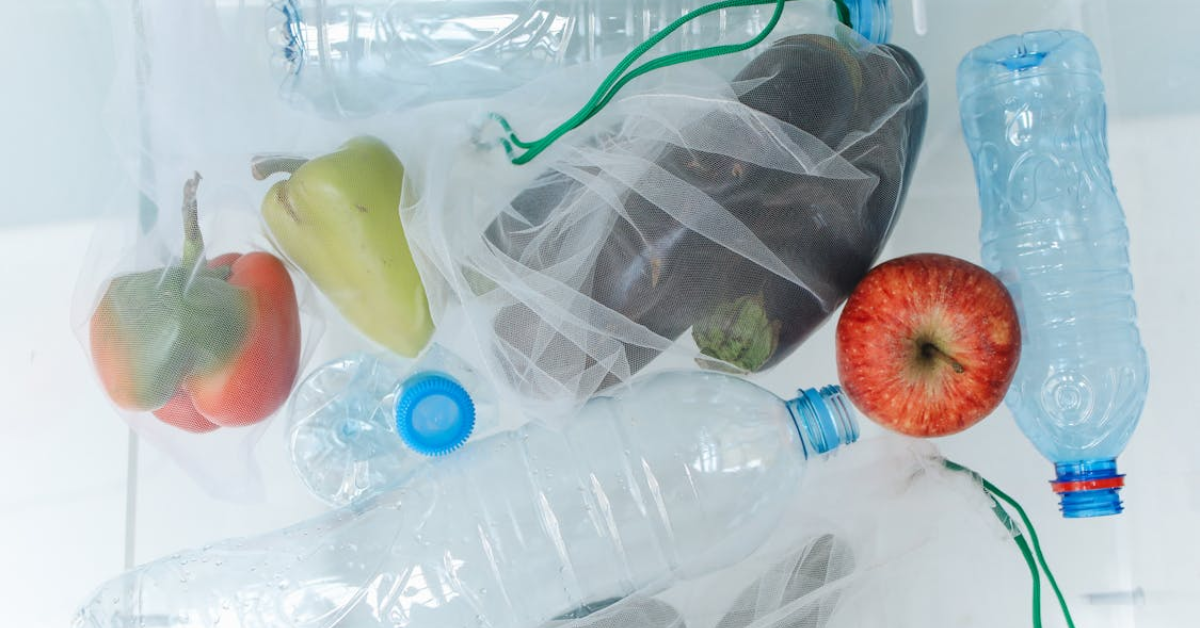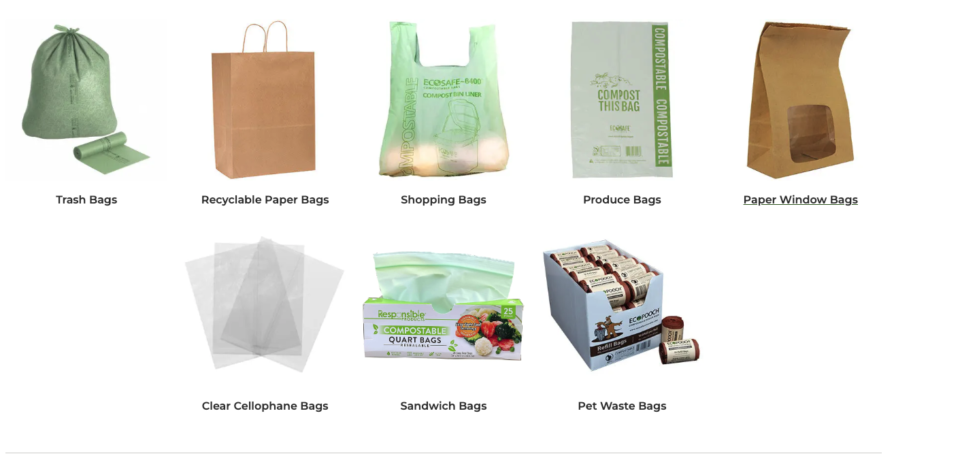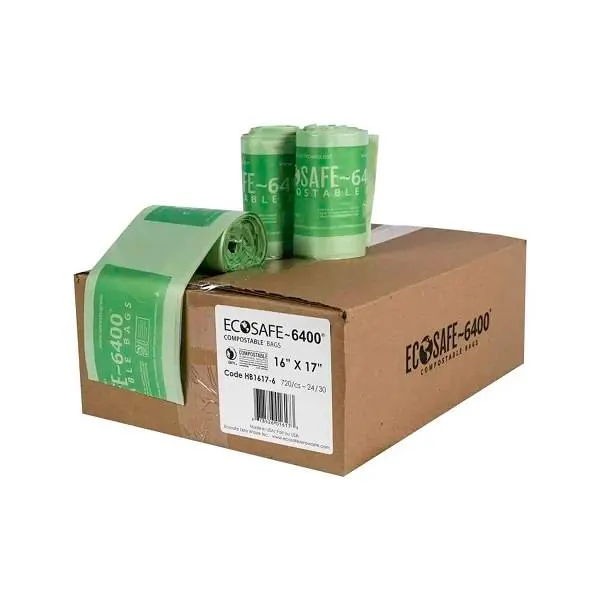
Can Compostable Trash Bags Help the Environment? Understanding Their Impact

*Collaborative Post
The idea behind the innovation of compostable trash bags is to tackle the environmental mess that using conventional single-use plastics comes with. Each year, the amount of plastic waste humans produce is over 400 million tonnes, and more than half of it is single-use plastics that, most of the time, end up in landfills or the oceans. This has become a serious concern owing to the level of health and environmental hazards it is causing.
Fortunately, the world is starting to get along with sustainable practices in different forms and you can see this following the fast-growing interest in eco-friendly alternatives that promise a greener footprint. Compostable trash bags represent one such solution, sparking widespread interest as the perfect replacement for traditional plastic bags. But, can they live up to their promise? This article looks to cover their true impact on the environment.
What Are Compostable Trash Bags?
Think of compostable trash bags as a more sustainable alternative to traditional plastic bags. They are designed to be part of a renewal cycle, breaking down into organic matter that enriches the soil. Unlike plastic bags that linger as pollutants and biodegradable plastics only disintegrate into smaller fragments under varying conditions, compostable bags can return to the earth when properly composted, making them a less harmful option for waste disposal.

The materials used in compostable bags are derived from renewable resources like cornstarch, a plant-based sugar. Polylactic acid (PLA) which is the primary ingredient is crafted from these sugars through fermentation and polymerization, processes that echo natural cycles of growth and decay. Cornstarch and other components serve as both structural elements and food for microorganisms during decomposition.
Production Process
Producing compostable trash bags begins with sourcing renewable plant-based materials. Each choice, from the type of plants used to the energy sources powering production and transportation methods, influences the sustainability of these bags. Now, turning these plant materials into eco-friendly plastics like PLA is a delicate transformation, beginning with the fermentation of plant sugars to produce lactic acid, which is then carefully polymerized.
Although the production of compostable bags generally consumes less fossil fuel compared to traditional plastic bags, it is crucial to consider the entire lifecycle for a comprehensive environmental assessment. This includes the energy used in crop cultivation, material processing, and product manufacturing. While it is true that compostable bags can have a lower carbon footprint than conventional plastic bags, we can only maximize their environmental benefits if we ensure that they are disposed of properly, ideally through industrial composting facilities that facilitate the complete breakdown of the material.
Read More: Reduce Waste and Implement Sustainable Business Practices | Small Business Tips
Environmental Benefits of Compostable Trash Bags
Reduction in Plastic Waste
The use of compostable trash bags provides a compelling solution to the millions of plastic waste that are dumped in our landfills and oceans, which linger for centuries, wreaking havoc on the ecosystem and wildlife.

Unlike traditional plastics, which are resistant to degradation and can persist in the environment for centuries, compostable materials break down through natural processes. Under optimal conditions in industrial composting facilities, many compostable bags can decompose into carbon dioxide, water, and biomass within 90 to 180 days. This significant difference in decomposition time highlights the environmental advantage of compostable materials over conventional plastics.
Lower Greenhouse Gas Emissions
By facilitating the rapid decomposition of organic waste, compostable bags significantly reduce methane emissions from landfills. Methane, a potent greenhouse gas, traps heat far more effectively than carbon dioxide in the short term, making it a major contributor to climate change. Diverting organic waste from landfills to composting facilities through the use of these bags can significantly lower our overall greenhouse gas emissions.
Additionally, the localized production of some compostable bags further reduces their carbon footprint by minimizing transportation distances compared to globally sourced plastic bags.
Soil and Ecosystem Health
The benefits of compostable trash bags extend underground to enhance the health of soils and ecosystems. When compostable bags break down in a compost setting, they contribute to creating rich, healthy compost. This material is then used to enrich the soil, improving its structure, moisture retention, and nutrient content. Healthier soils lead to healthier plant life and more robust ecosystems.
Unlike some biodegradable plastics that can leave behind harmful microplastics, compostable bags break down into harmless natural substances, ensuring safer environments for wildlife and reducing pollution in our waterways and oceans. Therefore, if we incorporate this compost into land management practices, we can even breathe life back into degraded soils.
You May Also Like: What Ingredients Do You Need To Make Your Own Eco-Friendly Cleaning Products?
Challenges and Limitations of Compostable Trash Bags
Composting Infrastructure
Compostable trash bags require specific conditions to break down effectively, which are typically found in industrial composting facilities. These facilities maintain high temperatures and controlled environments necessary for the decomposition of compostable materials. Unlike home composting systems, which often cannot reach the required temperature and aeration levels, industrial facilities are equipped to handle a wider range of compostable products.
Because home composting systems generally lack the conditions necessary to effectively decompose compostable bags, materials like PLA may not break down as intended, potentially contaminating the compost. However, it’s important to note that the availability of industrial composting facilities that accept compostable plastics varies significantly by region.
Consumer Awareness and Behavior
Educating consumers on the proper use and disposal of compostable bags is crucial. Many consumers are unaware of the specific requirements for composting these products and may dispose of them incorrectly, leading to contamination of recycling streams or improper degradation in landfills. Clear labeling and consumer education can help mitigate these issues.
There are several misconceptions about compostable bags, such as the belief that they can break down in any composting environment or that they can be recycled. In reality, compostable bags require specific conditions to decompose and are not suitable for conventional recycling processes. Additionally, some consumers mistakenly dispose of compostable bags in regular trash, where they do not decompose properly and may contribute to methane emissions.
To improve consumer behavior, we can start by promoting correct disposal practices through educational campaigns, clear labeling, and accessible information about local composting facilities. This will go a long way in enhancing the effectiveness of compostable products.
Cost and Economic Factors
Generally, compostable bags are more expensive than traditional plastic bags due to the higher cost of raw materials and production processes. This price difference can be a barrier for both consumers and businesses considering a switch to compostable alternatives. Businesses may face economic challenges when transitioning to compostable bags, including higher procurement costs and the need for additional infrastructure to manage compostable waste. Small businesses, in particular, may struggle with these costs without sufficient support or incentives.
However, despite the initial cost, compostable bags can lead to long-term savings and environmental benefits. Reduced waste management fees, decreased environmental impact, and alignment with sustainability goals can offset the higher upfront costs over time. By reducing plastic pollution and contributing to a circular economy, businesses can also enhance their brand reputation and meet the growing demand for sustainable practices.
Read More: How Your Business Can Go Green With These Simple Steps
Practical Tips for Using Compostable Trash Bags
Choosing the Right Compostable Bags
Check for Certifications: Look for certifications from reputable organizations like the Biodegradable Products Institute (BPI) or European Norm (EN) 13432. These certifications ensure that the bags meet specific compostability standards and will break down effectively in composting environments.
Read Labels Carefully: Ensure the bags are labeled “compostable” and not just “biodegradable.” Compostable bags are designed to break down into non-toxic components that contribute to compost, while biodegradable bags may leave harmful residues.
Material Composition: Opt for bags made from materials like PLA, PBAT (polybutylene adipate terephthalate), or PHA (polyhydroxyalkanoates), which are known to decompose well under composting conditions. These materials are derived from renewable resources and have been tested for effective breakdown.
Although compostable bags offer a more eco-friendly alternative to traditional plastic bags, it is important to understand their ideal uses and limitations. For instance in our households, compostable bags are perfect for collecting food scraps, yard trimmings, and other organic materials destined for your compost pile or bin. They help contain odors and keep your compost system neat. While for businesses, restaurants, cafes, and caterers can leverage compostable bags for food waste and disposable utensils that align with their sustainability goals.
Always remember that while some compostable bag materials like PBAT can break down in home composting, others like PLA might require hotter temperatures found in industrial facilities for a complete breakdown. Choose bags based on your composting setup (home vs. industrial), or look for certifications indicating suitability for both.
Conclusion
Compostable trash bags offer a promising alternative to traditional plastic bags by breaking down into harmless materials in industrial composting facilities. This reduces plastic waste, lowers greenhouse gas emissions, and improves soil health. However, for them to be truly eco-friendly, proper disposal is necessary, ideally through industrial composting facilities.
Despite its high cost of production and sales, the long-term environmental and economic benefits make compostable bags a viable solution for both households and businesses committed to sustainability. By understanding their usage and limitations, we can maximize the positive impact of compostable trash bags on our planet.
*This is a collaborative post. For further information please refer to my disclosure page.




